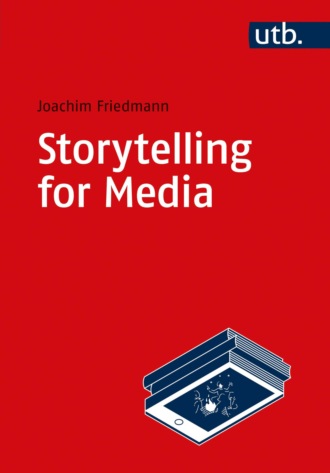
Полная версия
Storytelling for Media
Aristotle’s postulate that acting people in stories are imitated is still used today in narrative research and is referred to as mimesis in reference to the ancient Greek term μίμησις, which means imitation. This mimetic dimension of figure design is emphasized above all by modern film dramaturgy – credibility and psychological depth of the figure are the focus here, and careful research is considered essential to the creation of such a figure. In fact, a series like the American medical drama ER or the novel Jamila by Chingiz Aitmatov would not develop its narrative power without exact knowledge of the milieu and the people. Regardless of the narrative function of the characters, the recipients have the impression that they are following the experiences of real people. Thus, detailed research of the material is also part of the storyteller’s tasks.
In narratives that depict a narrowly limited milieu, such as a hospital or crime series, this concept is more difficult to apply, and requires some further, supplementary methods. In a hospital series, the permanent members of the ensemble are all doctors or nurses, in a crime series, all are investigators. In addition, they all pursue the same goal, namely to heal people or to solve a case, and are therefore more or less identical in their functions.
American dramatic advisor LAURIE HUTZLER has developed a model for differentiating such figures in a psychologically credible way while at the same time classifying them functionally. She uses the so-called enneagram, a model for determining personality, which describes nine different types, which in turn are grouped into three groups, depending on whether the character is emotionally, rationally, or instinctively controlled: those who react with their heart, brain, or “gut.” These personality types provide information about the underlying value system and the resulting behaviour patterns, which according to Hutzler, can be clearly differentiated between the different types.
This differentiation is particularly noticeable in ensembles, such as the TV series The Big Bang Theory, which portrays the lives of the four friends Sheldon, Leonard, Raj, and Howard. All four are highly intelligent men who work as physicists at the Caltech Institute in Pasadena. Leonard is a figure who, in dramaturgical terminology, is called a viewpoint character: the character from whose perspective the story is usually told. The viewpoint character is often the least differentiated figure and is ideally the most “normal” character in the ensemble so that the recipients can potentially build the highest level of identification with it. His three friends, on the other hand, are designed according to the basic types of the enneagram. With his IQ of 187, Sheldon represents the intellectual type; he is rarely in a position to show or recognize feelings. Engineer Howard is ridiculed by his friends for lacking a doctorate but he is an amorous daredevil; he is assertive and instinctual. Raj seeks great love, but due to his sensitivity and shyness is hardly able to communicate with women. As an emotional type, he lives out his need for love in a tender relationship with his Yorkshire Terrier, Cinnamon.
A similar pattern can be seen in the TV series Sex and the City; the focus is on the four friends Carrie, Samantha, Cynthia, and Miranda, who live in New York at the turn of the millennium. All four are successful, affluent, educated, attractive women – and in their mid to late thirties, in search of both a partner for life and sexual adventures. Again, it is the viewpoint character Carrie who shows the least psychological extremes. Samantha, on the other hand, a successful marketing businesswoman, is bold, and lives out her sexuality uninhibitedly. She uses men self-confidently and egoistically without opening up emotionally. For romantic Charlotte, on the other hand, sex is secondary and only a means to finally find long-term stability. As an emotional type, she firmly believes in love. The cynical, rational Cynthia is an academic and a lawyer who laughs at Charlotte’s romantic ideas. She is the typical representative of the intellectually-driven realist.
Narratology takes a critical view of these psychologically-oriented approaches to figure design. The functional-psychological archetype model is regarded as scientifically outdated, and psychologists deny the enneagram any scientific basis. In practice, however, these concepts have proved their worth many times over. Hutzler advises, amongst many others, Oscar-winning screenwriter and director Paul Haggis. Vogler’s archetypes are the blueprint for the ensembles of several successful Disney films such as The Lion King. Even if these approaches are scientifically controversial, they have proven their worth in practice and are interculturally applicable.
2.3 Thematic Figures
Beyond the functional and mimetic design, there is another dimension of figure design, which the narrative scientist BRIAN RICHARDSON calls the thematic, and which can be identified, above all, in a type of narrative that is called gnoseological. The aim of the protagonist in this type of story is not necessarily to obtain an object. Instead, here – as the term gnoseologically suggests – the narrative is centered around the main character gaining knowledge. In the Grail legend, Percival must indeed search for the grail, but above all, he must transform from an innocent fool to a noble, knowledgeable knight. Mowgli, brought up by wolves, must discover his humanity in the Disney film The Jungle Book, and Hans Castorp must mature into a man in The Magic Mountain. In the course of the narrative, these protagonists repeatedly encounter characters who impart the necessary knowledge for this maturation process: the knight Gurnemanz teaches Percival courtly virtues and the hermit Trevrizent embodies humility and godliness. Mowgli is admonished by the panther Bagheera to reason and caution, Baloo the Bear encourages him to experience the joy of life; Colonel Hathi and his elephants stand for the value of discipline. Hans Castorp meets Settembrini, who teaches him humanism and artistic virtues, furthermore he learns from the cold rationalist Naphta and the disciplined Joachim, while Clawdia Chauchat embodies Eros and her lover Mynheer Pepperkorn stands for, and imparts, an exuberant cult of vitality. This principle is also applied in games. Revan, the protagonist of Star Wars: Knights of the Old Republic, has lost his memory at the beginning of the game and now must decide whether he wants to join the dark side or the light side of the Force. He repeatedly encounters characters who thematically embody one side or the other, such as the battle droid HK-47, who embodies the dark side, or the Jedi Knight Bastila Shan, who stands for the light side of the Force.
In a mimetic dimension, these figures often seem less lifelike, rather larger-than-life and idealized. On a functional level, they don’t necessarily have to contribute to the progress of the action. Their function is most comparable to that of a mentor, as they often accompany and advise the main character on their archetypal heroic journey, which they usually undertake in a state of paradisical innocence, before completing their maturation process with the support of the thematic figures. But this role is not mandatory. With this type of figure, the focus is less on a functional assignment or mimetic dimension than on the representation of a particular world model or ideology that serves the main character as an example of how to shape his or her own life.
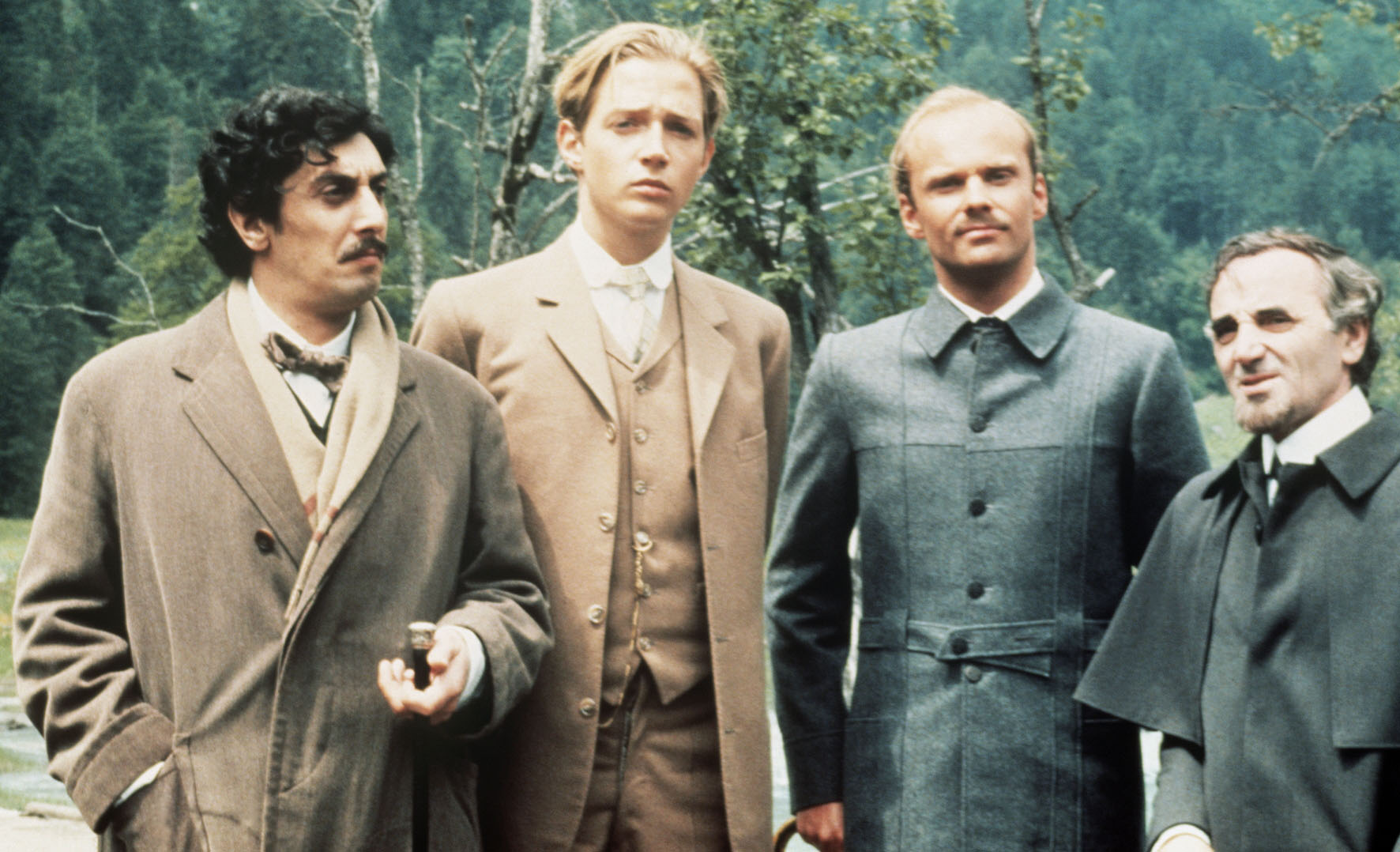
Protagonists of the film adaptation of The Magic Mountain (1982) by Hans W. Geißendörfer: Ludovico Settembrini (Flavio Bucci), Hans Castorp (Christoph Eichhorn), Joachim Ziemßen (Alexander Radszun), and Leo Naphta (Charles Aznavour). © Beta Film GmbH
These thematic figures are often organized in opposition pairs (see Chapter 4 Binary Narrative Oppositions) in order to emphasize their characteristics. Thus, the rational nature of Bagheera is emphasized in contrast to the fun-loving Baloo, as is the immoderate nature of Mynheer Pepperkorn and Clawdia Chauchat in contrast to the disciplined Joachim and the self-denying Naphtha. These thematic figures can stand not only in opposition to other figures but also in opposition to a setting, a narrative space (see Chapter 3 Setting – The Narrated and the Narrative Space). This constellation is known in Hollywood narrative cinema as the “fish-out-of-water” principle. Here, the main character must act assertively in an environment constructed in semantic opposition to the thematic aspects of their personality in order to generate a multitude of conflicts that force the character to act. Thus Elle Woods, initially described as naive, has to prove herself in Legally Blonde at the elite Harvard University. The romantic, naïve, Princess Giselle is moved from her fairyland to the modern, cold Manhattan in the film Enchanted. And Nemo’s father is literally a fish out of water saving his son in Finding Nemo.
Since the gnoseological narratives focus on the cognitive process, it makes sense to use this type of narrative with the corresponding characters in so-called “edutainment” formats, which combine narrative and didactic elements in order to convey certain insights to the recipients. For example, the German Soccer Association (DFB) mascot, PAULE, and his friends represent the values that the DFB stands for: fairness, respect, responsibility, and team spirit. PAULE, a role model, exemplifies these traits, while his friend Franziska embodies creativity, confidence, and commitment to women’s soccer. Emil and Katy stand for academic qualities and analytical intelligence by being experts in football rules, tactics, and analysis. Henri represents a fun spirit and the need for exercise, while Benni shows us that nutrition and sports go hand in hand. Even Winnie, who serves as an antagonistic force in the group with his sometimes misguided behaviour, wins the audience over with his passion for the game of soccer.
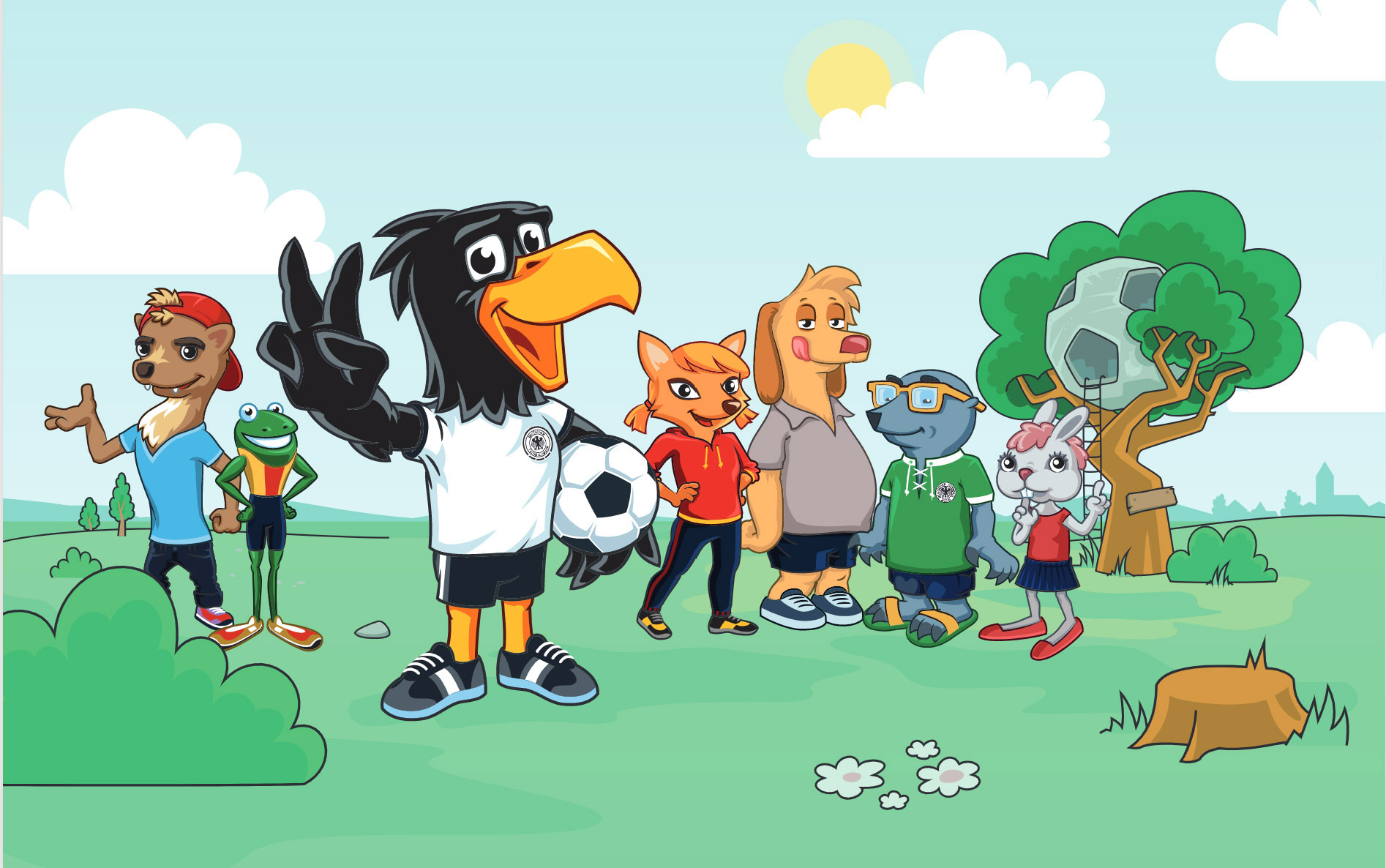
PAULE and his friends – from left to right: Winnie, Henri, PAULE, Franziska, Benni, Emil and Katy© 2021, DFB
Marketing and advertising campaigns also make use of this principle when basic characteristics or certain values that are to be linked with a product are embodied in a narrative figure – be it in the male, nature-loving cowboys of Marlboro cigarettes or Mr. Clean, who promises to power through tough stains.
If one examines further examples, one finds that in a narrative figure all three dimensions of character design are usually realized with different weightings. None of these three models can claim to capture the complexity of the narrative figure in its entirety. Depending on the narrative intention, different aspects of a figure are emphasized. In an action-adventure, psychological considerations are usually of secondary importance; the functionality of the characters as heroes, helpers, or opponents is in the foreground. When it comes to an interpersonal drama, the figure design focuses on mimetic aspects in order to create credibility and psychological depth. If thematic and didactic aspects are in the foreground, animals, robots, or other non-human protagonists can also become narrative figures – as in Aesop’s fables, in Disney films or in games – without losing credibility.
2.4 Anti-narrative Figures
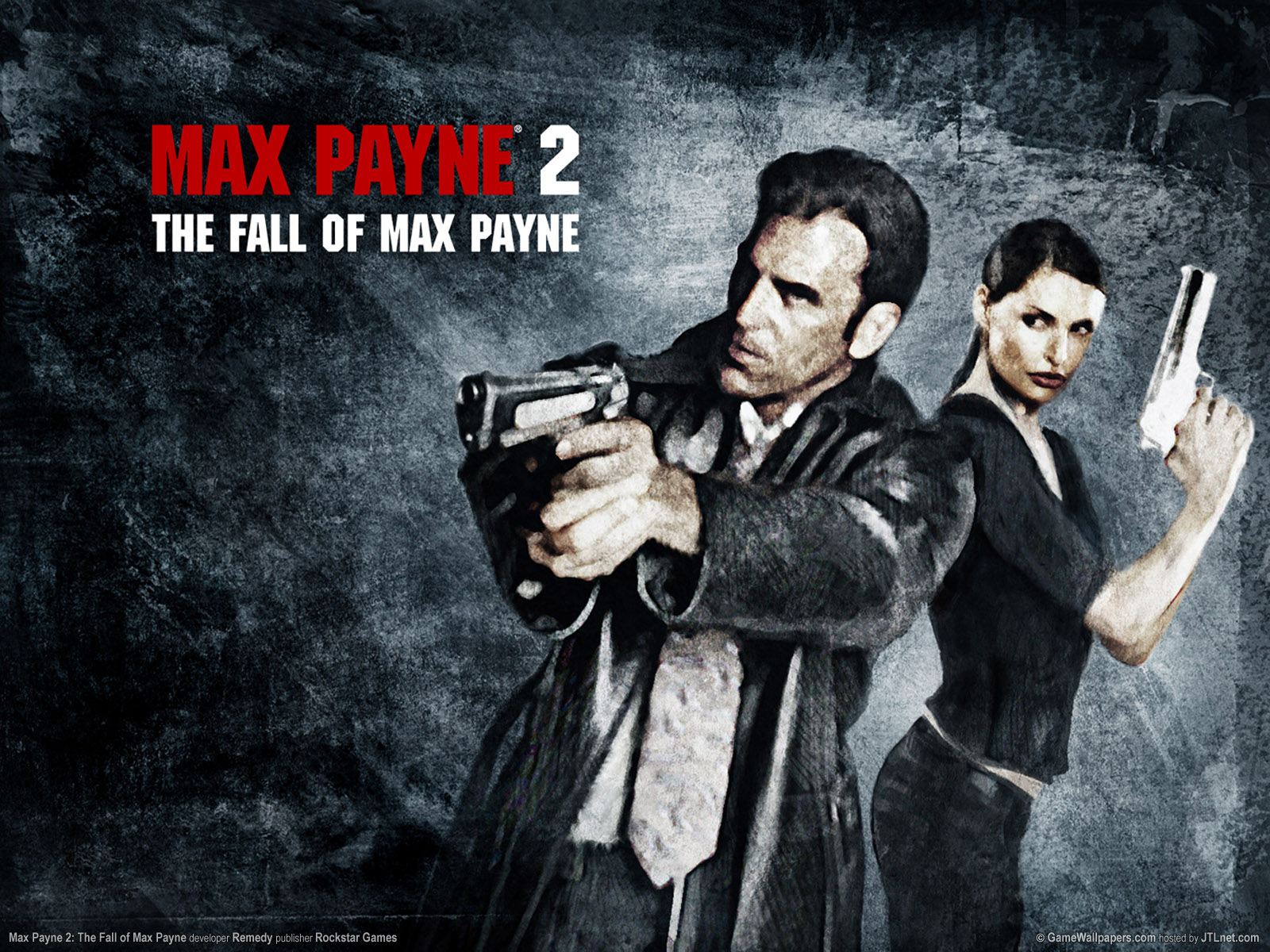
Max Payne is a third-person shooter video game; the design is strongly influenced by the aesthetics of neo-noir and graphic novel. © Niranjan, 2004 on flickr under CC BY 2.0 https://www.flickr.com/photos/shany_410/11254934962004
The design dimensions described here can, of course, also be deliberately undermined. Thus, the concept of mimesis is called into question when a narrative figure becomes aware of its status as a narrated character – and thus communicates to the recipients that it is not taken from life but from a book or a film, like Harold Crick, the protagonist of the film Stranger than Fiction or Max Payne, the hero of the game series of the same name. Some storytellers even refrain from designing their characters with a clearly defined identity, such as Salman Rushdie, whose protagonist Gibreel from The Satanic Verses has several identities and is at the same time a Bollywood actor as well as the archangel Gabriel. In Beckett’s Waiting for Godot, the protagonists Vladimir and Estragon no longer have a consistent identity at all, and thus no thematic or mimetic credibility, nor a function within the plot. What would be perceived as a mistake in a prototypical narrative is, in this case, a consciously-set, artistic means of expression. Here the creator is actively working against the willing suspension of disbelief of the viewers in COLERIDGE’s sense. Intertextual procedures also reveal the artificiality of the text and the figures. For example, Turgenev in King Lear of the Steppes or Akira Kurosawa in Throne of Blood use figures that come from Shakespeare’s dramas as a reference to the original narrative and thus also to reveal their origin as imaginary figures that do not come from life.
Although this type of figure design is increasingly used in postmodern literature and contemporary drama, it would be wrong to see it as a narrative strategy. Empirical research suggests that a text must have an anthropomorphic, goal-oriented protagonist in order to be perceived as a narrative. In this respect, such design methods are to be regarded as anti-narrative; they are used to achieve an artistic effect, as shown by the example of the Beckett drama. However, they work with figures that are not to be regarded as prototypically narrative for this purpose.
Chapter 2 summary:
The imitation of acting people is foundational for a narrative, as Aristotle states. A narrative figure is a representation of a human character, which would describe the mimetic dimension, but there is also a functional dimension that describes the purpose of the narrative figure in the plot of the narrative. The thematic dimension describes a figure that represents a particular ideological or philosophical worldview. Such figures appear most often in narratives in which the center of the plot is the main character gaining knowledge. Most narrative figures unite all three dimensions of figure design, whereby the respective weighting differs according to the type of story and genre. In some narratives, this character design is undermined for artistic reasons, in which, for example, a figure is not assigned a clearly defined identity or is conscious of its status as a narrated character, thus questioning the mimetic dimension of the figure.
EXERCISE: Find and name the archetypes in one of your favorite movies. Try to describe the thematic, functional, and psychological dimensions of one of your favorite narrative characters.3 Setting – The Narrative Space
A story is spatially located – this statement is almost commonplace in narratology. It means that the actions and events of a narrative take place in one or more places – what is referred to as the setting in a dramaturgical terminology. But is the design of a narrative space subject to a narrative specificity or is it a purely descriptive representation because a story presupposes the space in which it takes place? In this case, a route description or driver directions would also fulfil all the criteria for defining a story. The driver, as a protagonist, is following directions, following a map, where they cross a given space and finally arrive at their destination. It’s likely that they must also overcome obstacles on the way that trigger conflicts, e.g. in the form of construction sites or traffic restrictions. A travelogue in a book or newspaper article could also be considered a narrative. Intuitively, however, such a text would not necessarily be defined as a story.
In this respect, one has to ask whether there are special strategies of narrative spatial design. As was already clear from the description of the narrative figure, the representation of a character of a story is subject to different design principles than in a purely descriptive text. This also applies to narratively depicted spaces.
For a long time, narrative spatial design was hardly an issue for structuralist narratology. One reason for this was probably to be found in the roots of narratology in linguistics and literary studies and the associated focus on literary narratives, thus, in turn, there is a focus on questions of temporality, narrator position, and narrative perspective. In fact, in contrast to visual narrative media such as film, comics or games, verbally conveyed narratives can even completely dispense with description of places. In jokes, for example, as a short form of narrative, often a dialogue takes place without a locality being depicted. Even if this may be a theoretical option in literature, narratologist GERARD GENETTE refers to the possibility of telling a story without location, while it would not be possible to situate it without temporal reference in the present, past, or future. Genette concludes that the temporal determinations of narration are more important than the spatial ones.
3.1 Juri Lotman and Semantic Space
The semiotician JURI LOTMAN, on the other hand, points out for the first time that it is precisely the design of space that is of decisive importance in the production of meaning.
“The most general social, religious, political, and ethical models of the world, with whose help man comprehends the world around him at various stages in his spiritual development, are invariably invested with spatial characteristics […] This property of spatial models is extremely important for art.” (318)
Lotman does not define more precisely what he understands as an artistic text, but since he develops his model paradigmatically through narrative texts, it can be assumed that he links his considerations to the narrative form. He calls the narrative text a “plot,” whereby for him this plot consists of three necessary elements:
1 “some semantic field divided into two mutually complementary subsets;
2 the border between these subsets, which under normal circumstances is impenetrable, though in a given instance (a text with a plot always deals with a given instance) it proves to be penetrable for the hero-agent;
3 the hero-agent.” (240)
Put simply, Lotman formulates a minimal definition of a narrative. For him, this consists of two spaces separated by a border and a protagonist, whom he calls “hero.” The most important and defining step in the plot is the hero-agent’s crossing of a border.
What is particularly important here is the concept of the “semantic field,” (97) which describes the narrated world. As shown, Lotman assumes that the human cognitive process and thus the production of meaning is primarily spatially organized, i.e., that space is the bearer of meaning, whereby Lotman is in agreement with more recent human geographical and cognitive psychological findings. According to Lotman, this semantization of space takes place in narrative texts on three levels: first, space is characterized by binary topological oppositions such as “above vs. below” or “inside vs. outside.” Second, the topological oppositions are linked to semantic oppositions such as “good vs. evil,” “protected vs. unprotected,” or “artificial vs. natural.” Third, in the narrated world, these oppositions are created by spatial conditions and topographically realized in the text of the narrative, for instance as mountain and valley, house and forest or – as Lotman shows in Dante’s Divine Comedy – heaven and hell.
The space in narratives is thus not a neutral container, but through semantization makes action in this space meaningful in the first place. This is where the second important term of Lotman’s definition comes into play, the border. For Lotman, the most important topological feature of space is the boundary, which divides semantic space into at least two subspaces in opposition, such as urban and rural space, or the profane world of everyday life in opposition to the magical world of adventure. In Lotman’s model, the motif of crossing the border is of particular importance: the border is impermeable and insurmountable for everyone except the hero of the narrative. Crossing the border defines him or her as the protagonist of the story.
Although he does not refer specifically to his works, Lotman is in agreement with the aforementioned anthropologist Joseph Campbell and his concept of the monomyth. Here, too, the moment of crossing borders is a constitutive element, from the world of profane and everyday life to the world of magic and adventure. Christopher Vogler, who has used Campbell’s insights as a structuring model for film dramaturgy, also recognizes the structural border between the 1st and 2nd acts in the hero’s transgression of boundaries. Campbell describes the semanticized spaces and their topological connections. According to Campbell’s observation, the hero is often prevented from crossing the border by a threshold guardian, which can also be depicted by a high wall or a large gate. In mythological narratives, these borders are usually positioned at the upper or lower end of the world – also topological attributions. Thus, the heroine in Mother Holle must first jump into a deep well, needing to reach the very bottom of a deep hole. Having arrived in the magical world, the heroine has to help Mother Holle, who is responsible for snowfall on planet Earth – and so, is carrying out her duties at the very top of the vault of heaven. The hero’s way back into the world of everyday life leads her through a large, magnificent gate where she receives her reward in the form of golden.
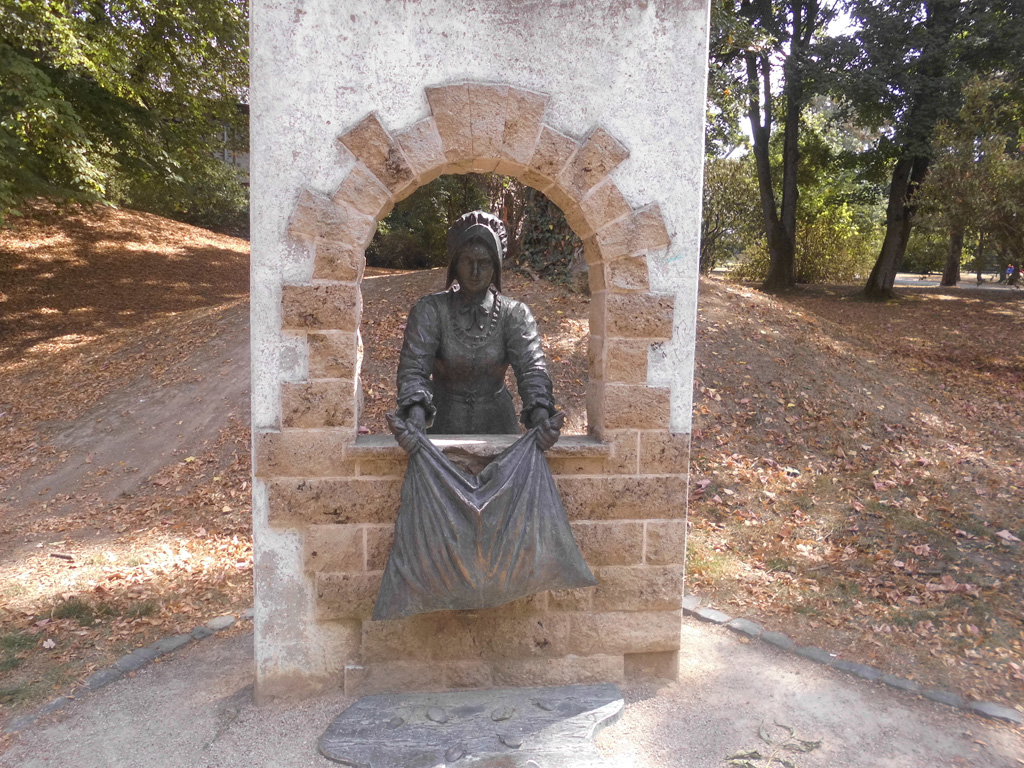
Frau Holle monument in the Frau Holle Park in Hessisch Lichtenau. Photo by Markus Kroll, Creative Commons license.
Lotman’s model can be especially useful when applying it to mythological narratives, not only to the original sagas and myths that Campbell has studied but also to narratives built on similar structural principles. Thus, in Tolkien’s The Lord of the Rings, the hero Frodo has to move from his homeland, the green valley in the Shire, to the elevated, black Mordor, from bottom to top, from fertile land to barren mountains, from idyllic, good homeland to an evil foreign land. Only he and his companion Sam Gamgee cross the border to Mordor, where the giant spider Shelob guards the threshold. It should be noted that the border to Mordor is by no means the only one the heroes have to overcome. Middle Earth, the setting of the novel, is made up of a multitude of semantic spaces with different topographical features: the companions must cross the dangerous and enchanted Old Forest, they must climb the desolate, deserted Weathertop, and they must descend into the dark, underground mining town of Khazad-dûm.
Lotman’s model not only serves to analyze mythological plots but can also be applied to the study of modern literature, such as Thomas Mann’s novella Death in Venice, where the spaces Munich and Venice are semanticized by opposition couples such as home vs. abroad, land vs. the sea, hetero- vs. homosexuality. Crossing the border from Germany to Italy, Gustav von Aschenbach flees from the repressive bourgeois world in which he is forced to suppress his homosexuality. In Venice, he finds his sexual identity, but has to pay for this border crossing with his life.

